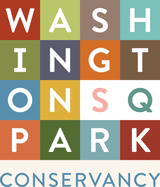Welcome Home, Bees!
Greenwich Village is the hottest neighborhood in NYC, and two beautiful new homes have just opened up right in the heart of it: Washington Square Park. With multiple studio apartments and beautiful views, these houses are the perfect retreat for some of the Park’s hardest working gardening staff. The bees!
On July 20th, two native bee houses were installed in Washington Square Park. One on a catalpa tree in Holley Plaza, the other on a tree by the LaGuardia entrance. Keep your eyes peeled for a light wood hexagon jutting out from the trunk of the tree and you’ve spotted the houses. These locations were chosen so that the homes are protected and close to flowers and water for nourishment, while still having a good balance of sun to keep them warm and shade for protection in the hot afternoon.
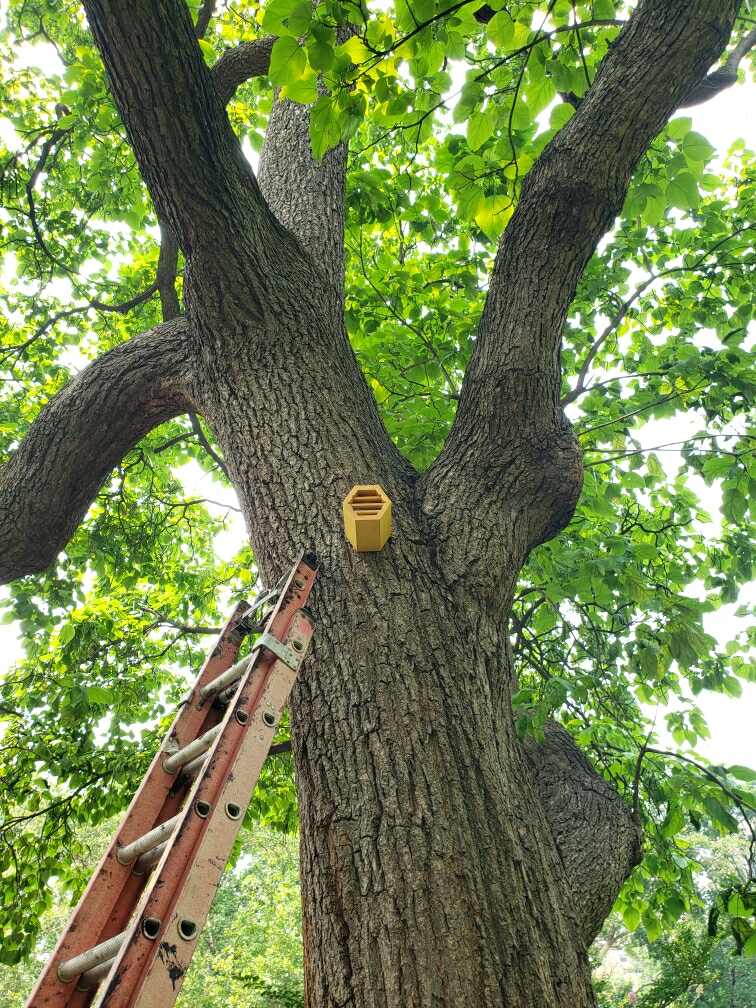
Bee house installed on the catalpa tree in Holley Plaza 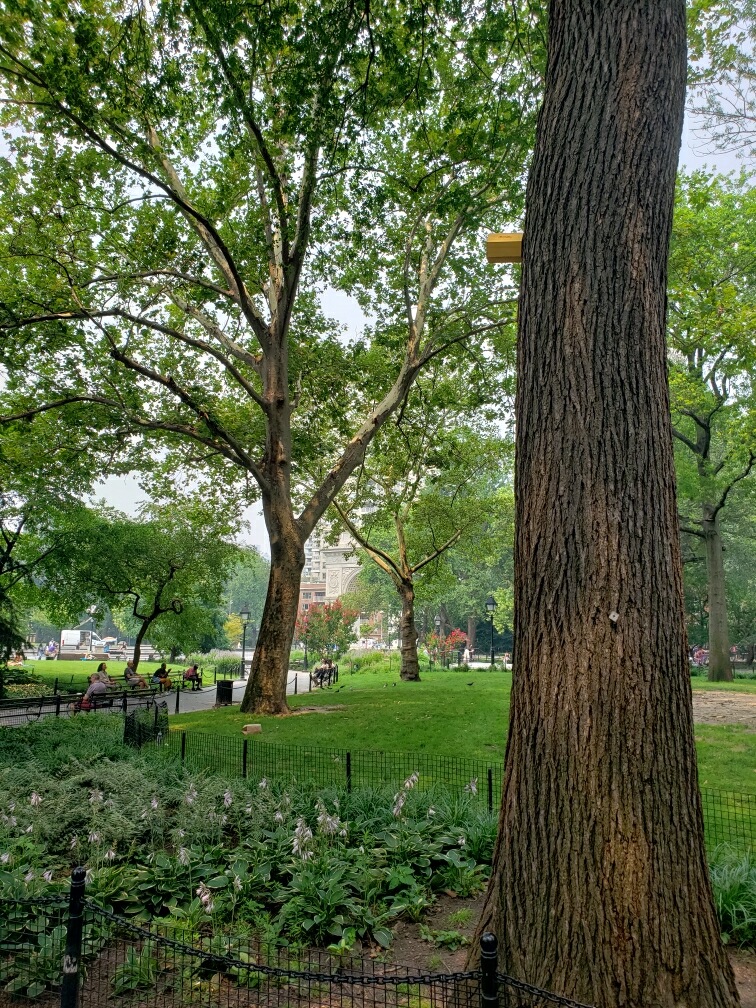
Bee house installed on a linden tree near the LaGuardia entrance
Handcrafted in Brooklyn, the bee houses were donated to Washington Square Park through The Bee Conservancy’s Sponsor-A-Hive program, which WSPC applied to in April on behalf of the Park. The Sponsor-A-Hive program places native bee homes across the U.S. to bolster local ecology and help protect native bees. Bees are an essential piece of our agricultural system as they pollinate one in every three bites of food we take, but they’re also important to keeping Washington Square Park lush and thriving!
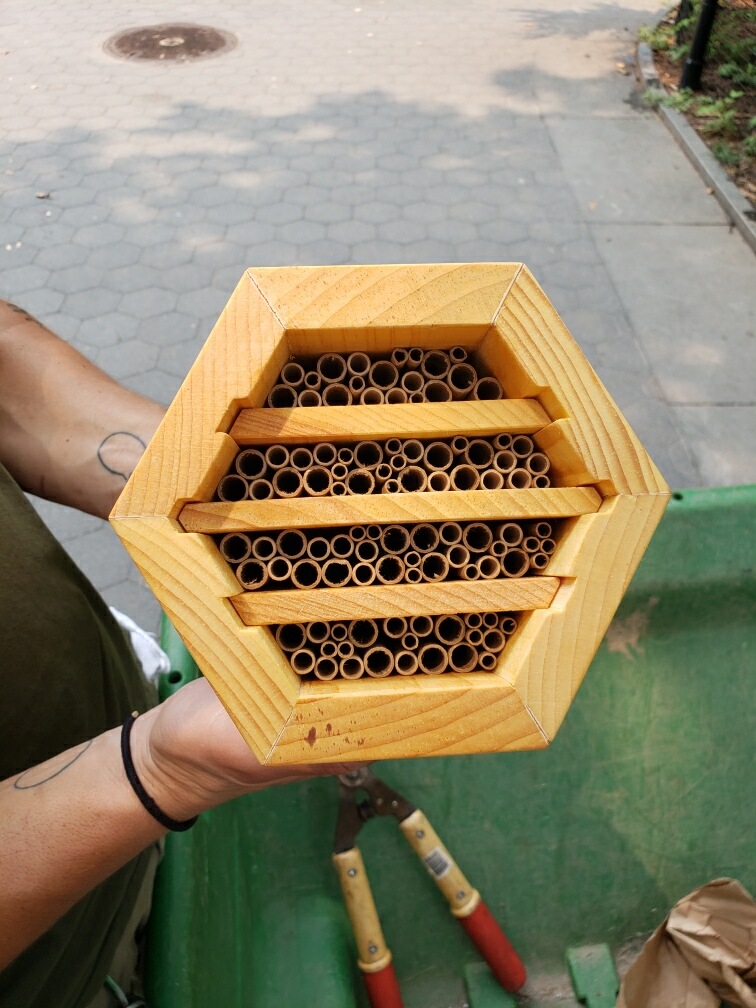
Unlike honeybees, native bee species don’t live in hives. There are 4,000 different species of native bee, and nearly all of them are solitary dwellers living in tunnels or burrows in the ground, or in hollow reeds, plant stems, and holes in wood. One in four of the species are at risk of extinction, which is why it is so important to provide native bees with this safe haven. The bee houses consist of a sustainably sourced pine wood frame, filled with small tubes in 8mm, 6mm, and 4mm diameters that mimic the natural holes bees use. The tubes provide a safe space for females to lay their eggs, with one bee per tube laying 5-7 eggs. The tubes rest on multiple shelves, which helps maintain hygiene by keeping some space between the tubes while also providing a place for bees to land. While beehives produce wax and honey, the bee houses do not, and require almost zero maintenance.
These bee houses are designed to attract three specific types of native bees, all of them considered to be “generalists,” meaning they feed on a wide variety of flowers and plants. Mason bees (Osima genus) populate the largest tubes and get their names from the way they use mud to seal off their nests. Leafcutter bees (Megachile genus) like the 6 or 8mm tubes, and get their name from the way they slice off pieces of leaves to build a nest. And Small Carpenter bees claim the smallest tubes, which mimic the holes they drill into wood which gives them their name. Did you know that since native bees don’t have a hive to protect, they tend to be less aggressive, especially if left alone!
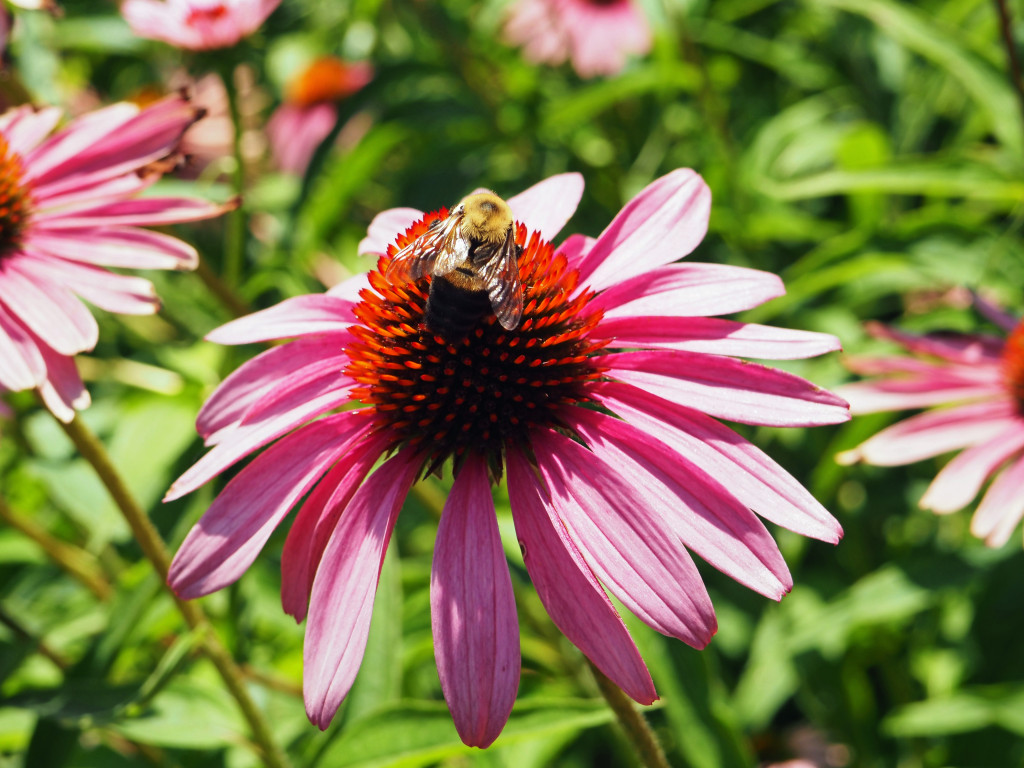
The bee houses are part of an ongoing effort to make Washington Square Park a pollinator-friendly space. The Park’s horticulture team has made a significant effort to increase the number and variety of pollinator plants throughout the Park. Right now the echinacea are stealing the show – take a close look next time you’re near one of the beds and you’re bound to see happy bees buzzing about. Washington Square Park is a green oasis in the middle of a dense urban space. That’s why it’s so important to do everything we can to help support what local ecology does thrive here.
